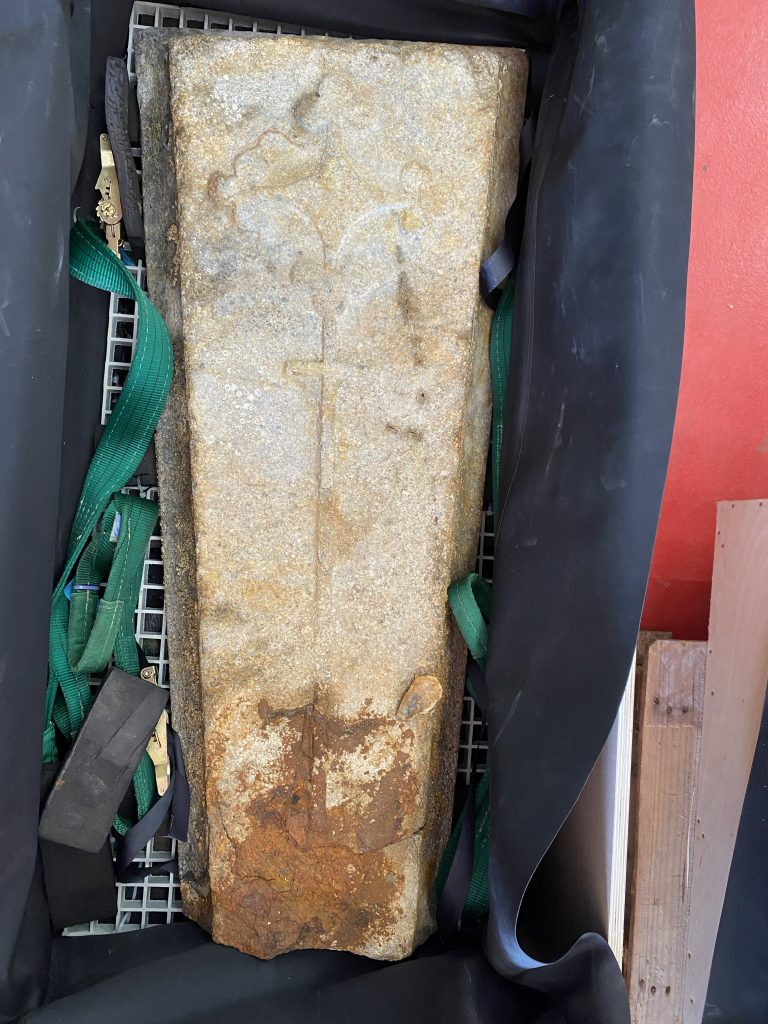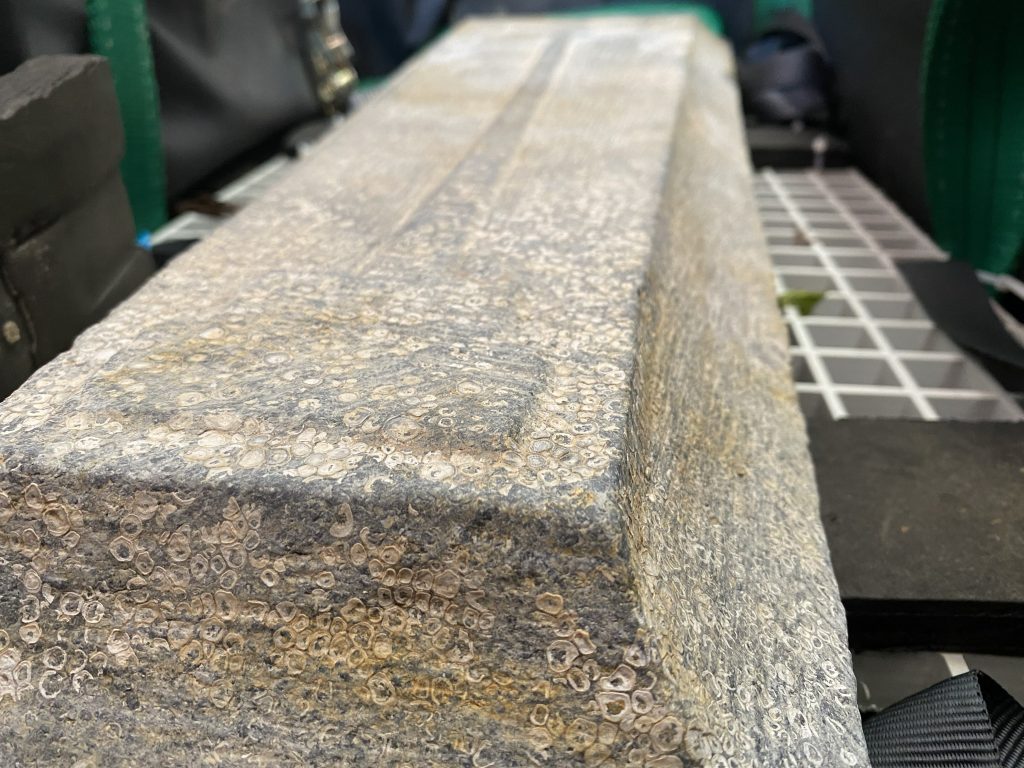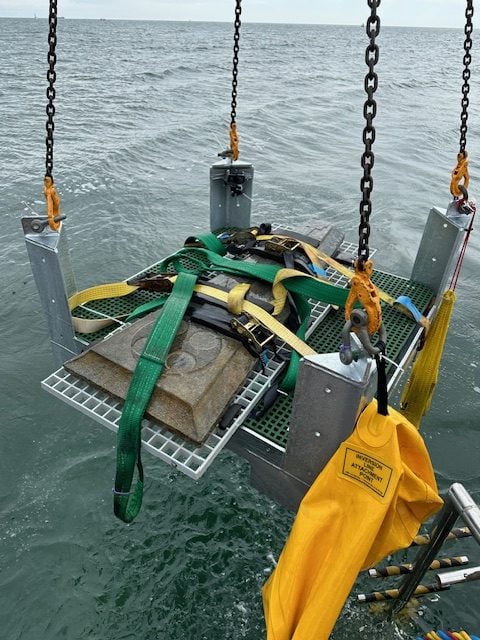Archaeology & History
Archaeologists Recover Huge Medieval Slabs From an 800-Year-Old Shipwreck
The relics were part of the cargo of a 13th-century ship and reveal fresh insight into medieval stonemasonry.

A pair of medieval slabs has been recovered from the depths of Studland Bay, off the coast of Dorset in the U.K., after lying underwater for some 800 years.
The relics were part of the cargo of a 13th-century ship, the remains of which were discovered in 2019 by maritime archaeologists from Bournemouth University in Poole, the U.K. The surviving medieval vessel represents the oldest known English shipwreck where the hull can still be seen. Among its other cargo were several grinding mortars of Purbeck stone, which lent the site its name, the “Mortar Wreck.”

A cross carved on the smaller medieval grave slab. Photo: Bournemouth University.
The slabs recovered earlier this month were likewise made of Purbeck stone, also referred to as Purbeck marble, and remarkably well-preserved. One measures almost five feet in length and weighs in at more than 154 pounds; the other, found in two pieces, has a combined length of about 6.4 feet and comes in at a whopping 440 pounds.

One half of the larger medieval grave slab. Photo: Bournemouth University.
Both artifacts are carved with Christian crosses—one a wheel-headed cross and the other a splayed-arm cross—a common motif in the 13th century used on coffin lids or funerary monuments for high-status clergy members. Purbeck marble, a form of limestone quarried on the Isle of Purbeck, was also a popular material around this time. A marble that could be highly polished, it could be found in most Gothic architecture, besides gravestone slabs, across Britain.
“The wreck went down in the height of the Purbeck stone industry and the slabs we have here were a very popular monument for bishops and archbishops across all the cathedrals and monasteries in England at the time,” said Tom Cousins, a maritime archaeologist from Bournemouth University who led the excavation, in a statement. He pointed to examples of such slabs that can be found in Canterbury Cathedral, Salisbury Cathedral, and Westminster Abbey in London.

Barnacles attached to one of the medieval grave slabs. Photo: Bournemouth University.
The relics, Cousins added, offer fresh insight into medieval stonemasonry, particularly when it comes to Purbeck marble.
“Although Purbeck marble was quarried near Corfe Castle [a village in Dorset], there has always been a debate about how much work was done here and how much was done in London,” he said. “Now we know they were definitely carving them here, but they hadn’t been polished into the usual shiny finish at the time they sank so there is still more we can learn.”

One of the medieval grave slabs being lifted out of Studland Bay. Photo: Bournemouth University.
In a two-hour recovery operation, the university team raised the slabs from a depth of more than 22 feet. They will next be desalinated and conserved in preparation for display at the Poole Museum in Dorset, which is set to reopen next year. Other artifacts recovered from the Mortar Wreck are also bound for the museum.
Archaeologists will continue exploring the Mortar Wreck in the coming years, with plans to study the timber frames of the ship’s hull, which remain well-preserved in low-oxygenated water and sand.
“Very few 750-year-old ships remain for us to be able to see today,” said Cousins, “and so we are extremely lucky to have discovered an example as rare as this, and in such good condition.”





